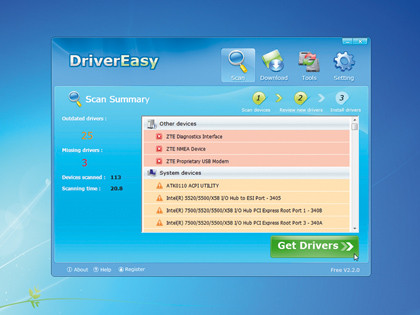Keeping your PC running at its peak performance has always been hard work. This isn't entirely Microsoft's fault: much of the problem lies in the way that third-party applications mistreat your system. Still, it's important that the operating system provides robust tools to maintain and repair your computer in order to keep it running as fast as possible.
Windows 7 does make one notable step forward in this area with the introduction of its Troubleshooting platform. Click 'Control Panel | System and Security | Troubleshoot Common Computer Problems' and you'll find a few built-in tools to help resolve issues with Windows Update or get audio playback working again. They're all simple wizards and can be used by anyone to detect and clear up many common PC problems.
Elsewhere, though, Windows 7 offers very little extra in the way of new maintenance functionality. The backup tool is now slightly better, there are some defrag tweaks (though the utility still won't optimise your file layout) and System Restore is a little more configurable. But apart from this, maintaining a Windows 7 PC will take just as much effort as it did on Vista or XP.
Safety first
Microsoft would argue that its first priority has to be user safety. The company is never going to give Windows an aggressive disk cleaner, for instance, because of the risk that it will delete an important file. And Registry cleaning is even more risky, while offering few practical benefits.
There is some truth in this idea. We've come across several disk cleaners that delete files based on extension alone. That's a risky business, and those utilities do occasionally delete important files.
There are safer improvements that can be made, though. If applications are uninstalled properly then much Registry and hard drive clutter will disappear. The PC Plus Service Pack features an uninstaller to do just that.
Sign up for breaking news, reviews, opinion, top tech deals, and more.
Buggy drivers remain a major cause of crashes and system instabilities. Windows 7 does a better job of locating new drivers for you, but it's still not good enough. We've included a tool that will identify any driver updates that you might have available.
Our third addition is a defrag tool that not only defragments files and consolidates free space, but also reorganises your files so that the most commonly used are placed in the fastest part of your hard drive. This often delivers a very significant performance boost.
Windows 7 does little to help optimise your services, so if you're a knowledgeable PC user, SMART may be interesting. The app automates the process of disabling unwanted services by allowing you to choose one of three profiles for your PC. Beware, though – disabling a service can have unexpected side effects, so test any new configuration thoroughly before you accept it.
IObit Uninstaller

Windows 7 does nothing to manage application clutter, and poorly programmed uninstallers can leave your hard drive still packed with junk files. Fortunately IObit Uninstaller can quickly clean up. After removing an unwanted app, the program's 'Powerful' scan checks your PC for leftover files and Registry entries. These are displayed, and if they're surplus to requirements then you can delete them all with a single click.
Puran Defrag Free Edition

Windows' own defrag tool has never done a good job of optimising your hard drive, and the latest version is no exception. Puran Defrag Free Edition moves frequently used files to the fastest part of your hard drive. You can defragment files or folders by selecting the 'Puran' option from their right-click context menu. A scheduler lets you run full defrags at a specific time, when the PC is idle or when the screensaver starts.
DriverEasy

Windows 7 is better than Vista at locating drivers for your hardware, but once they're installed, you'll rarely hear of any possible upgrades. DriverEasy will quickly detect all your devices, installed drivers and their version numbers, then look for and alert you to any drivers that have updates available. It's all very straightforward, and unlike most of the competition, DriverEasy is free for personal use.
Current page: Tweaking Windows 7: Maintenance
Prev Page Tweaking Windows 7: Networking Next Page Tweaking Windows 7: Security